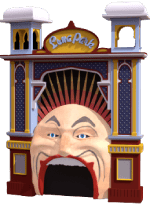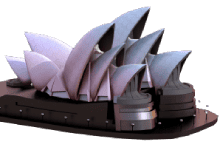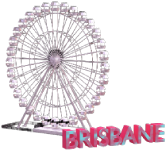It’s critical to distinguish between a strong call to action (CTA) and one that isn’t as effective. It’s important to remember that, while your brand may be the greatest in its industry, if you can’t entice people to visit it, they might never understand the value you offer.
Here are 5 things you can do to figure out why your CTAs aren’t performing and how to make them work better!
- Hard to find CTAs
CTAs can become lost in the content of a page, which is something that many marketers face. They may be hidden within text and images, or they might be presented as text links that don’t stand out on the page like a prominent button would be. Changing your website’s colours and layout is the easiest way to improve the user experience, but it isn’t an end-all solution. It might seem simple, but if your CTAs aren’t easy to see by your visitors, they won’t take the actions you want them to. Try these methods as a remedy:
Use whitespace.
If your CTA appears crowded, make some breathing room for it. By distinguishing it from the content, you may increase attention to it and make sure it stands out.
Utilise contrasting colours.
A colour that stands out against the background of the page is one approach to make your CTA buttons easy to spot on the page. There is no single hue that leads to a higher conversion rate, but using a hue that makes your CTA jump off the screen gives you the best chances for success.
Place your CTA strategically.
Place your CTA where the content leads you. The location of your CTA is determined by the accompanying material. Because the goal and objective of this sort of content are significantly dissimilar, a landing page and a blog might have very different CTALocations. After reading an engaging article on a blog, readers may be enticed to continue exploring. A landing page, on the other hand, should have its call to action (CTA) in a more prominent location so that it is the first thing a person sees when they land on the page. This is because the goal of a landing page is to convert visitors. If you know what your content’s purpose and position in the buyer’s journey
- Unclear or wrong value
It’s not enough to tell someone to click a button like this. Vague CTAs such as “Click here” or “Contact us” don’t provide the user with a clear incentive to perform it. If your visitors are unsure about what they’ll get from clicking on your CTA, they’re less likely to convert.
You can address this problem with these strategies:
Highlight your value proposition and distinct selling points.
Users should know how clicking on your CTA will benefit them. A message like, “Click here for a free estimate,” implies a simple action (click here) that offers a clear result (free estimate). Visitors are far more likely to click on your CTA if you promise to satisfy their demands and needs.
Personalise calls to action.
Personalisation is one method for making your CTAs more relevant to your audience. A HubSpot research discovered that personalized CTAs resulted in a 202 percent greater click-through rate than standard ones. CTAs can be customised for each individual visitor based on his or her location, language, lead status, and a variety of other variables. If you have a contact that has expressed an interest in your services before, you might want to provide them with more bottom-of-the-funnel content or tools than a new website visitor who is learning.
- Lack of urgency
Users are far more likely to convert if they believe they need to act right away in order to benefit from the offer. Urgency is not always required, and its usage should be used sparingly, but in the proper setting, it can be a potent instrument for increasing conversions.
Use urgent copy in your CTAs.
Adding a few words to your CTA can also convey urgency. Try switching your copy from “Download ebook” to “Download ebook now” or “Schedule your appointment” to “Schedule your appointment immediately!” To generate a sense of greater urgency, try changing it from “Download ebook” to “Download ebook now.”
- No emotion
You need your content to elicit a strong reaction from your visitors, and your CTAs are no exception. It’s less likely to inspire action if your CTA lacks excitement.
Try these techniques to jazz up your call-to-action:
Use exclamation points!
Adding a question mark to your CTA text may be a simple and effective technique to demonstrate enthusiasm and passion for your product while drawing attention to it!
Use words that promote an emotional response.
Select words that generate curiosity and excitement in your audience. For a customized house builder, for example, “Start building your ideal home right now!” is far more likely to elicit an emotional response than “Submit your project.” The phrase “dream house” appeals to people’s imaginations by encouraging them to picture themselves and their family in a perfect new home.
- Lack of testing + Conversion Rate Optimisation
If you’re like many website owners, you just slap a CTA on there and forget about it. You’re losing out on a great opportunity to figure out which strategies perform best at converting your audience if you do that. Conversion rate optimisation necessitates constant CTA testing.
A/B Testing
This is one of the most straightforward ways to evaluate CTA performance. Create a CTA, then select one element to modify, such as colour, form, or language. Run the test for a set length of time in order to acquire a large enough sample size. Take the higher-performing CTA and change another component before repeating the process. When conducting split testing, remember that you can only change one element at a time to focus on the influence of each variable. Keep experimenting with your CTAs to determine what combination is most successful in converting your audience!
Always keep in mind that conversion rate improvement is a continuous operation. Industries and consumers change, so what was the greatest option a year ago may be the worst choice today. When you’re developing a new call to action, keep your customers’ requirements and how you can help them in mind.





